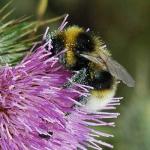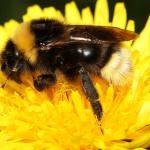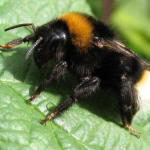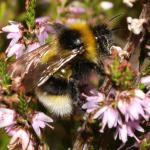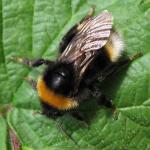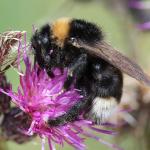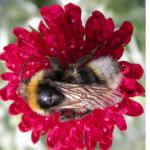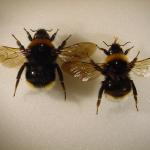Psithyrus distinctus PÉREZ 1884; Apis nemorum FABRICIUS 1775; Psithyrus hedini BISCHOFF 1936
After P. Williams http://www.nhm.ac.uk/research-curation/research/projects/bombus/ps.html#bohemicusOne of the socially parasitic bumblebees formerly placed in the genus Psithyrus, which is now regarded as a sub-genus of Bombus. It is known to parasitise the nests of Bombus lucorum. The general distribution is more northerly than that of its look-alike Bombus vestalis, which parasitises B. terrestris. This may be a species which is showing signs of distribution change due to climatic change. The map shows a number of post-1970 records in West Sussex, where it was fairly regularly found, although never commonly, in the early 1970s but it has not been recorded in this county recently. However it should be noted that, in the early years of the 20th Century, Sladen also remarked on its apparent absence from SE England. Both males and females can be tentatively identified by the narrow yellow patches at the base of the white tail. These patches are generally less intense and extensive than in B. vestalis. However, microscopic examination will be required to reliably separate these two species.
The species occurs throughout the British Isles. However, as noted above, it is far more frequent towards the north. This trend to a northerly distribution is repeated throughout most of Europe (but is montane in the south), and across northern Asia.
This bee is not regarded as being scarce or threatened.
It is found in a wide variety of habitats, as is its host.
Females leave hibernation during April or May. New males and females are produced in July and August.
After emerging from hibernation during April the mated female seeks out a small B. lucorum nest with a few workers. The female enters the nest furtively and hides while it acquires the nest scent. It may then dominate, or kill, the host queen and take over the egg-laying for the colony. These eggs produce only new B. bohemicus females and males, which take no part in the running of the colony, all work being done by the host workers.
A wide range of plants from different families.
None specifically recorded in Britain
Profile written:
Proofed: February 2012


